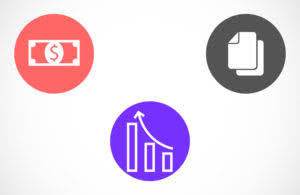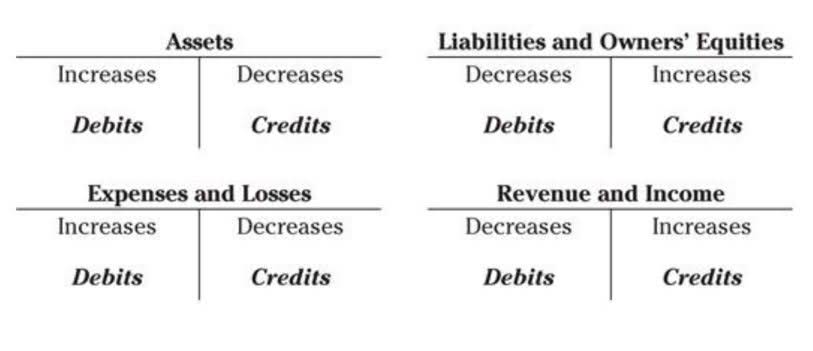Bookkeeping
Cash Basis Accounting: Definition, Example, Vs Accrual

Accrual accounting recognizes revenue when earned and expenses when incurred, regardless of when cash changes hands. By understanding cash basis net income and its role in managing finances effectively, you’ll Car Dealership Accounting be better equipped to make informed decisions that will benefit both your business’s bottom line and overall growth. Due to its simplicity, Cash Basis Net Income is also useful for startups or new companies with limited resources. Using this accounting method allows them to focus on generating revenue without worrying about complex financial reports. Cash basis net income is a simple and straightforward method of accounting that can be advantageous for small businesses. This helps in managing day-to-day finances efficiently as businesses can track the cash they have on hand at any given moment.

How to Make Farm Recordkeeping More Efficient

Profit metrics influence major business decisions around budgeting and planning because they consider both cash and non-cash expenses. Businesses that sell on credit need to account for revenue at the time of sale, not when payment is received. This helps match revenue to the right period, giving a more accurate picture of performance.
- Cash basis accounting does not inherently solve cash flow issues but facilitates clearer tracking and management.
- By deferring income recognition until payment is received, businesses can reduce their taxable income in the short term.
- This comprehensive approach ensures a balance between understanding immediate liquidity and recognizing longer-term financial commitments.
- In such cases, the simplicity of cash basis accounting can be outweighed by the need for more detailed financial information, making accrual accounting a more suitable choice.
- The main difference between accrual and cash basis accounting lies in the timing of when revenue and expenses are recognized.
Business type
Tax implications play a critical role in the decision to switch accounting methods. Businesses must file IRS Form 3115, Application for retained earnings Change in Accounting Method, to obtain permission for the change. The timing of the transition can influence tax outcomes; for example, choosing a fiscal year with lower tax rates can be advantageous. Businesses should also account for potential adjustments under the IRC, such as Section 481(a) adjustments, which ensure income is not duplicated or omitted during the transition.
- It’s also common in industries with longer payment terms, recurring billing, or complex projects.
- Generally, businesses with average annual gross receipts of $25 million or less over the past three years can opt for cash basis accounting.
- Cash accounting puts leaders in a position where they must manage the business based on its cash balance.
- Cash basis accounting recognizes revenues when cash is received and expenses when cash is paid.
- Businesses using accrual basis accounting may find it necessary or beneficial to switch to cash basis.
- Clarity on these aspects ensures businesses meet compliance standards while leveraging the benefits of cash basis accounting.
Why understanding revenue gives you an edge
The simplicity of cash basis accounting can benefit small businesses or sole proprietors who may not have the resources to manage accrual accounting complexities. By focusing on cash transactions, these businesses can track their financial position without extensive accounting systems. Tools like QuickBooks and Xero offer features that cater to cash basis accounting, allowing users to efficiently record and monitor cash flows. While cash basis accounting offers an accurate snapshot of your actual, current cash flow, it doesn’t provide a comprehensive picture of a company’s financial health. It may be difficult to gauge profitability or assess future financial risks, especially if a company relies on credit or has significant delayed payments.
Common revenue recognition methods
While cash basis accounting offers simplicity and ease of use, it comes with some disadvantages that businesses should be aware of. In accrual accounting, the cost of long-term assets is allocated over their useful lives through depreciation or amortization. This aligns expenses with the periods that benefit from the asset, as the cost of a capital asset is spread over its life as it gets used. Cash accounting typically accounts for the entire asset cost at the time of purchase.
The Best States to Retire for Taxes
- This clear picture is particularly important for small businesses and startups that must closely monitor their cash position to ensure they have enough funds to cover expenses and support growth.
- Tools like cash flow forecasts and variance analysis remain essential for informed decision-making.
- C corporations, partnerships with 1 or more C corporations as partners, some types of trusts, and tax shelters cannot use the cash method for accounting.
- The differences between cash and accrual accounting can lead to varied interpretations of financial data.
- Cash basis accounting is one of two major accounting methods businesses use to record revenue and expenses.
- Founded in 1993, The Motley Fool is a financial services company dedicated to making the world smarter, happier, and richer.
- Shifting from accrual to cash basis accounting requires understanding both methods and their impacts on financial reporting and tax obligations.
By analyzing trends and identifying any significant changes, business owners can evaluate whether they need to adjust their strategies or make operational changes. In this blog post, we’ll delve into the concept of cash basis accounting, its significance, advantages, and the entities that commonly employ this method. Income is recorded at the time a business receives payment, regardless of when the service or product was delivered or the invoice was issued. Cash accounting could be acceptable if you run a tiny business and plan to keep it cash basis accounting measures income based on that way.
When paired with robust spend management solutions, cash basis accounting helps small businesses monitor and control cash flow more efficiently. This integration ensures businesses remain aligned with their financial goals, make informed decisions, and maintain a healthy cash flow. The developer sends a final invoice for $5,000 on that date, but the client doesn’t pay until January 5th. Under cash basis accounting, the revenue from the project would be recognized on January 5th when the payment is received, not on December 15th when the work was completed and invoiced for. Accrual accounting includes accounts receivable (A/R) and accounts payable (A/P) in financial statements, which inform you of what payments you will receive and your outstanding bills. Cash basis accounting only shows you how much cash you’ve brought in or paid out.
Cost Basis: Overview, How to Calculate, Example

Businesses must anticipate periods of low cash inflow and prepare to meet financial obligations. Tools like cash flow forecasts and variance analysis remain essential for informed decision-making. Cash basis accounting does not inherently solve cash flow issues but facilitates clearer tracking and management.
![]()
The hybrid method offers the simplicity of the cash method while still capturing accounts receivable and accounts payable, providing detailed financial information to manage your farming business. Cash accounting suits smaller-scale businesses that need straightforward financial tracking and prefer simplicity over comprehensive financial analysis. If you sell on credit, meaning you provide goods without immediate cash receipts and invoice customers later, you’re better off using another accounting method. Since cash basis accounting allows more discretion in choosing when to record revenue and expenses, there’s a possibility of manipulating financial reports to present a more favorable financial picture.
